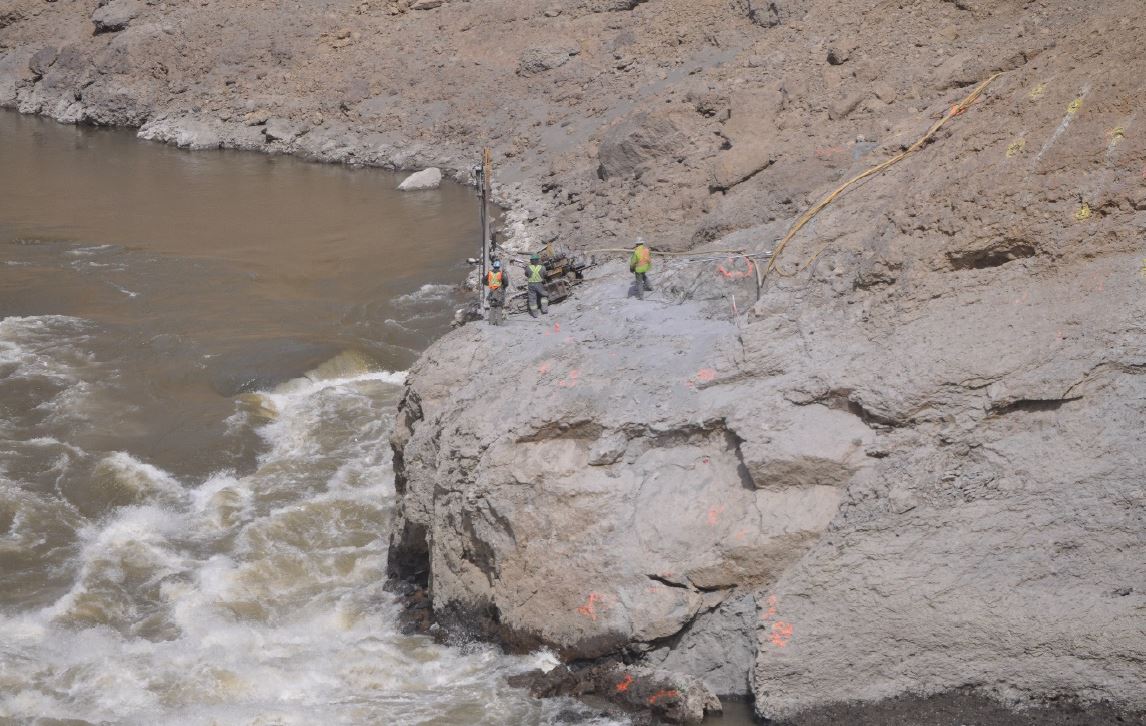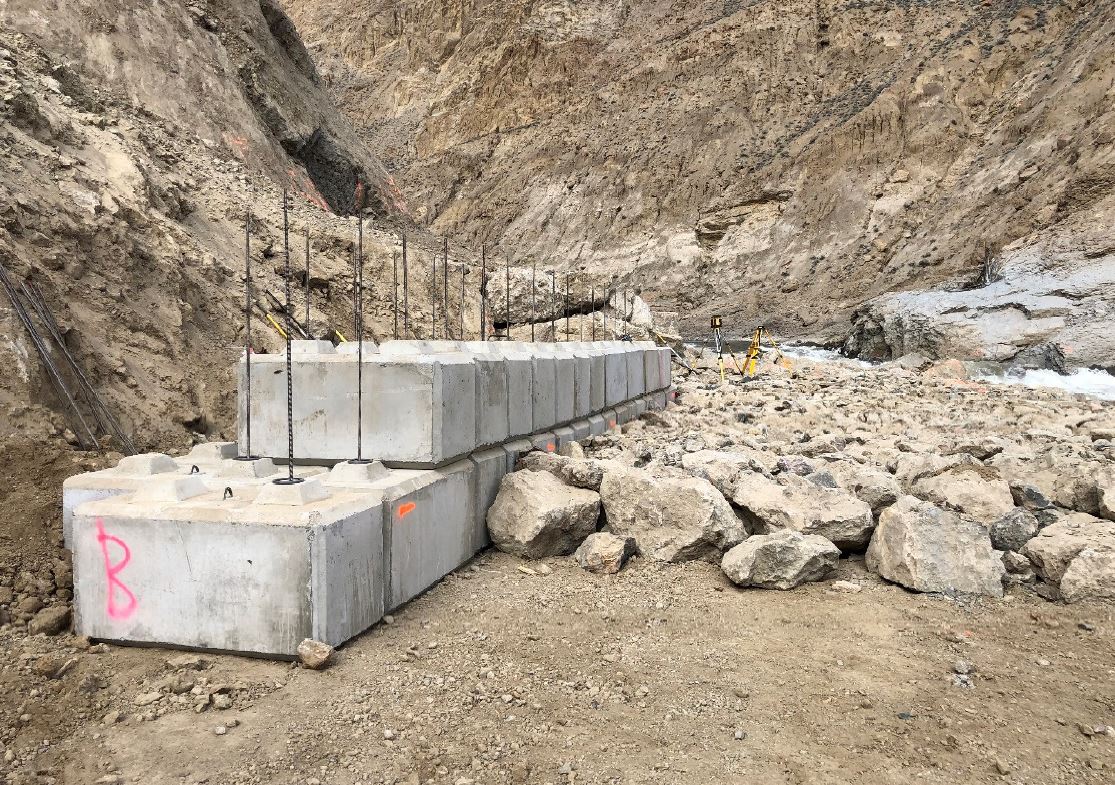Big Bar landslide response information bulletin
April 9, 2020
Crews will continue working through the Easter long weekend from April 10 to 13, 2020.
Ongoing onsite operations
Crews continued preparing the site for the upcoming installation and operation of a pneumatic fish pump system. This week, construction began on a concrete block fish ladder that will guide fish to a holding pool, from where they will enter the pump system. Close to 500 concrete blocks will be utilized, each being 1.5 metres in length, 0.75 metres in width and 0.75 metres in height.
Other activities underway include:
- improvements to the overland access route for the potential movement of fish by truck
- drilling on the East Toe in preparation for a final blast to widen the channel
- continued progress on the staging area
All in-channel blasting is now complete.
Sharing winter progress updates with First Nations
The First Nations Leadership Panel (FNLP) was recently reestablished to provide guidance on the Big Bar landslide response as the project moves forward. On April 2, DFO and provincial staff, and First Nations Joint Executive Steering Committee (JESC) members met with the FNLP delegates to update the group on the winter work progress, and upcoming plans for spring and summer work. When the FNLP last convened in September 2019, it endorsed options for winter construction and implementation. On the April 2 call, the FNLP reached consensus and endorsed the proposed mitigation options for fish passage and emergency conservation enhancement at the site. It also requested a follow-up discussion related to components of the emergency enhancement plans.
On April 7, DFO shared similar information with attendees at the
Forum on Conservation and Harvest Planning hosted by the
Fraser Salmon Management Council (FSMC). Participants were pleased with Peter Kiewit Sons ULC’s progress in the last three months and acknowledged the hard work of those involved.
Aerial view of the site, including (L-R) the concrete block fish ladder construction, the completed “nature-like” fishway and the protective rock fall canopy.
Crews drilling the East Toe in preparation for the second large blast, which will occur in April.
Concrete blocks being assembled for the fish ladder to guide fish to a holding pool, from where they will enter the pneumatic pump system.
https://www.pac.dfo-mpo.gc.ca/pacific-smon-pacifique/big-bar-landslide-eboulement/index-eng.html



